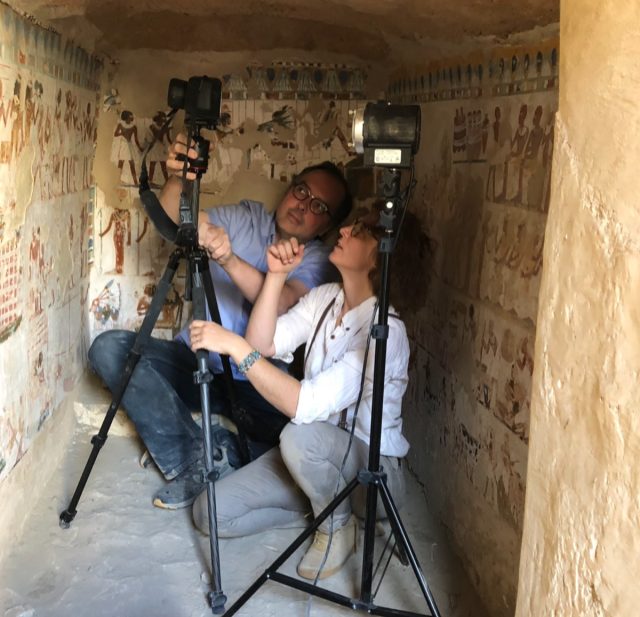Researchers have found evidence of two ancient Egyptian designs in tomb churches Theban Necropolisto a new paper published in the journal PLoS ONE. One, there is a ghost of the third hand slightly hidden under the white overprinted layer; the other has a crown and other royal accessories in the image of Ramesses II. These findings were made with a macro-X-ray fluorescence (MA-XRF) imaging device that allowed researchers to analyze the paintings on site, without the need to take physical samples.
X-ray and a a well-established tool helping to analyze and restore precious paintings because the amount of radiation means that they pass through the paintings without harming them. X-ray imaging can reveal anything which is painted on canvas or where the artist may have changed (or) his original vision. For example, Vermeer’s A Girl Reading a Letter at an Open Window it was first examined by X-ray in 1979 and revealed the image of Cupid hidden under a layer of excess paint. In 2020, a team of Dutch and French scientists used high-energy X-rays to open Rembrandt’s secret secret to his fame Cross art, he believes that he has lost his reputation.
In 2021, scientists used macro-X-ray fluorescence imaging to the map the distribution of elements in the color palette of Jean-Louis David’s famous portrait of the 17th-century chemist Antoine Lavoisier and his wife Marie-Anne – including the paint used on the floor – to create detailed maps necessary for further study . In the beginning this yearscientists used X-ray powder diffraction maps and synchrotron micro X-ray analysis to study Rembrandt van Rijn1642 with great skill Night Watchand found rare of a group called lead formate.
In 2022, the Dutch and the Belgians scientific work X-ray imaging techniques search The first distribution of the different colors in the yellow flower is well known in the 17th century painting by Abraham Mignon. A Still Life with Flowers and Vigilance to find out why it turned out to be flat and monochrome, especially compared to the other flowers shown in the picture.

That same year, conservationists were analyzing Vincent van Gogh’s X-rays The title of the poor woman and found hidden self-image behind the curtain. And this is not the first time that a Van Gogh painting has been X-rayed. Back in 2008European scientists used it synchrotron radiation for reconstruction a hidden image of a common woman painted by Van Gogh.
MA-XRF imaging in particular has already been used (in combination with hyper spectral imaging) to study a Greco-Roman funerary iconography from the second century CE, as well awareness remains of color on marble at Delphi in Greece. Now the MA-XRF scanner developed for one of the Delphi studies is being used to analyze ancient Egyptian art, as part of a wider project to explore the tombs of the Theban Necropolis. Most of the tombs of high officials had prayer rooms whose walls were decorated with pictures of the deceased and their fate in the afterlife.
It is well known that the ancient Egyptians had a very sophisticated (and easily recognized) style of painting, and there has been an interest in learning more about the colors and painting techniques used in modern art. Many scholars believe that this process began with painting the original image on a well-plastered wall, then applying a white or colored background. Some colors were lined up using different pigments, and the final outline was drawn with red ocher. Any paint that came out was painted with a clear coat of paint.